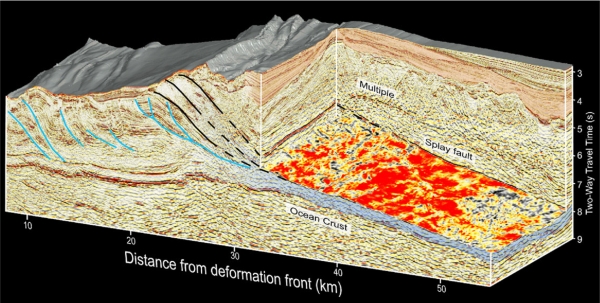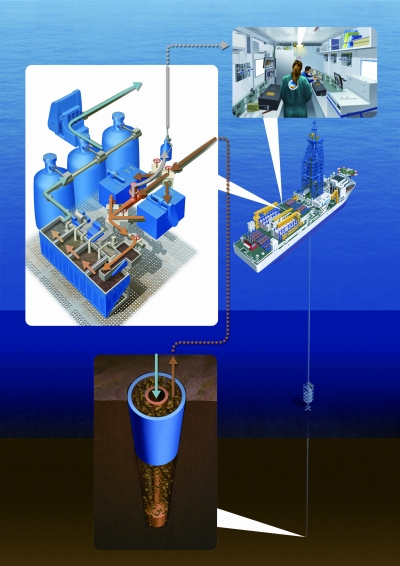From the Forearc Basin to the Accretionary Prism: Fluid Migration in the Nankai Subduction Complex
Dissertationskolloquium
Organiser: Sebastian Hammerschmidt
Start Time: 11/03/2014 18:30

Figure 1: 3D seismic volume of the IODP Kumano transect, SE offshore Japan (from Bangs et al. 2009). Black lines indicate the Megasplay

Figure 2: Schematic of drilling mud gas monitoring onboard D/V Chikyu (ÂĐ JAMSTEC).
back

